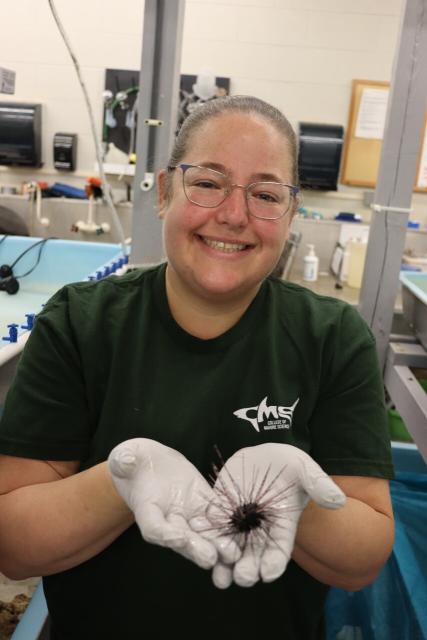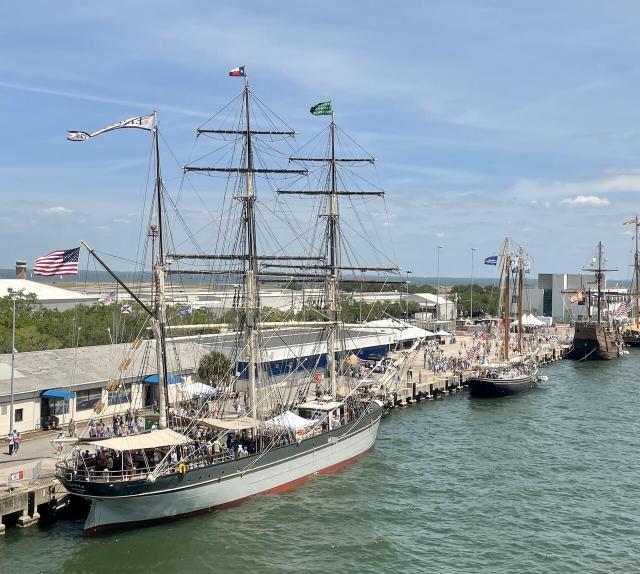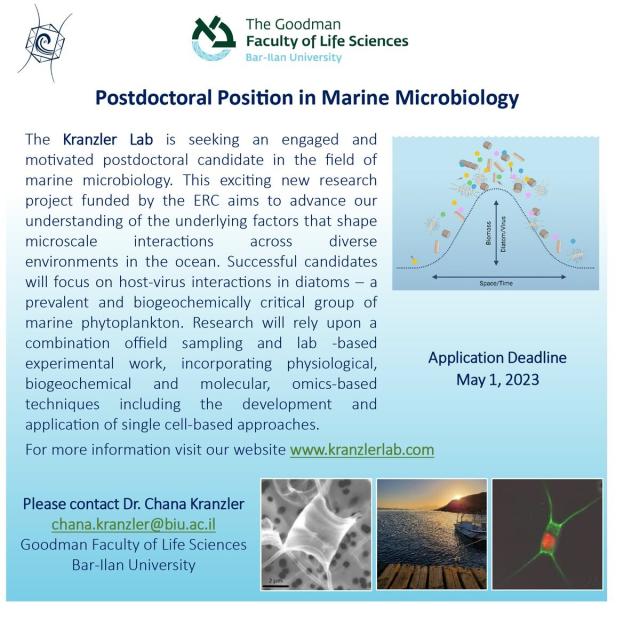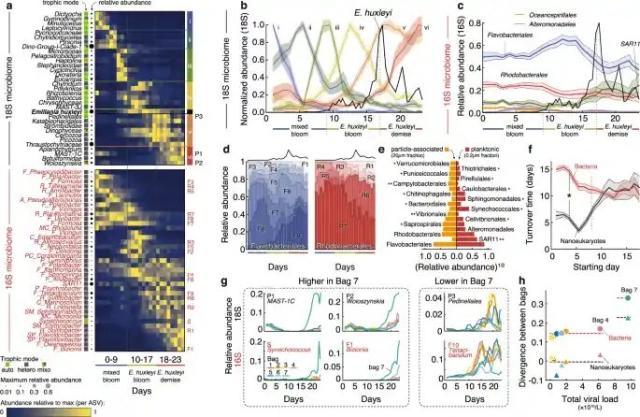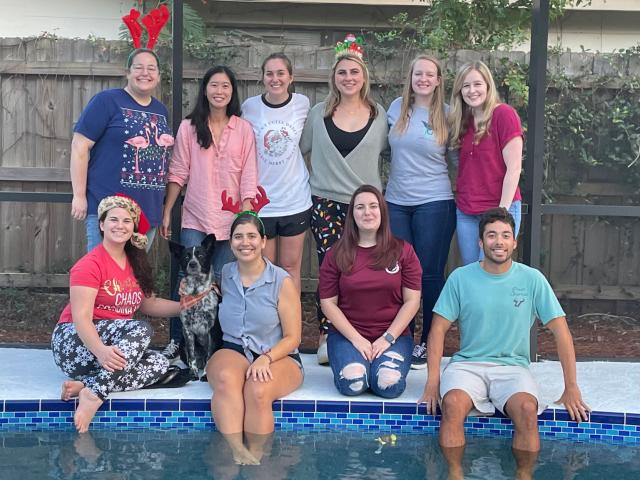Search
Items tagged with: Marine
Single-particle genomics uncovers abundant non-canonical marine viruses from nanolitre volumes
nature.com/articles/s41564-025…
#viruses #SingleCell #marine #ocean

Single-particle genomics uncovers abundant non-canonical marine viruses from nanolitre volumes - Nature Microbiology
Environmental micro-compartment genomics provides efficient and high-throughput single-particle DNA sequencing that captures overlooked members of microbial communities.Nature
74 countries have now ratified a landmark treaty to protect the high seas. Why hasn’t NZ?
The High Seas Treaty comes into force in January. New Zealand lags behind on several fronts, including marine protection and recognition of Māori customary rights.The Conversation
Expansion of the genomic and functional diversity of global ocean giant viruses
nature.com/articles/s44298-025…
#viruses #oceanography #marine #microbiology
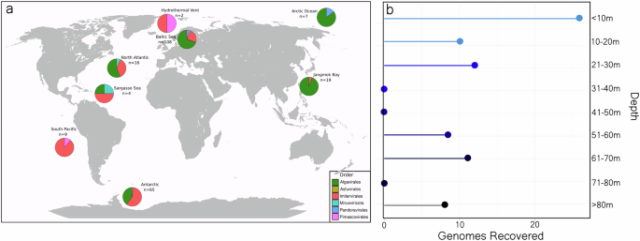
Expansion of the genomic and functional diversity of global ocean giant viruses - npj Viruses
npj Viruses - Expansion of the genomic and functional diversity of global ocean giant virusesNature
Mesoscale eddies shape Prochlorococcus community structure and dynamics in the oligotrophic open ocean
Very nice study from Henshaw et al shows that #marine heterotrophic bacteria can sense and move towards cyanobacteria when the latter are infected with #viruses.
Presumably the signatures of early infection are a sign that nutrients from a lysed cell will be available soon.
This is a nice study that has implications for understanding the role of viruses in the #ocean.
Article here:
nature.com/articles/s41564-024…
And we wrote a commentary here:
nature.com/articles/s41564-024…
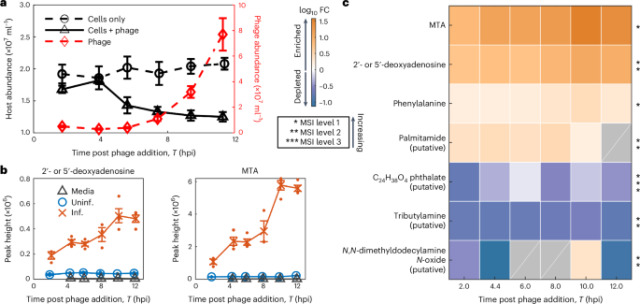
Metabolites from intact phage-infected Synechococcus chemotactically attract heterotrophic marine bacteria - Nature Microbiology
The authors use time-resolved metabolomics and microfluidics to characterize enhanced heterotroph chemoattraction to metabolites released from cyanobacteria during early stages of phage infection.Nature
Plymouth #Marine Laboratory (PML) has amazing new PhD studentships at the laboratory! Find out more:
pml.ac.uk/Working-with-us/PhD-…
#remotesensing #ocean #AI
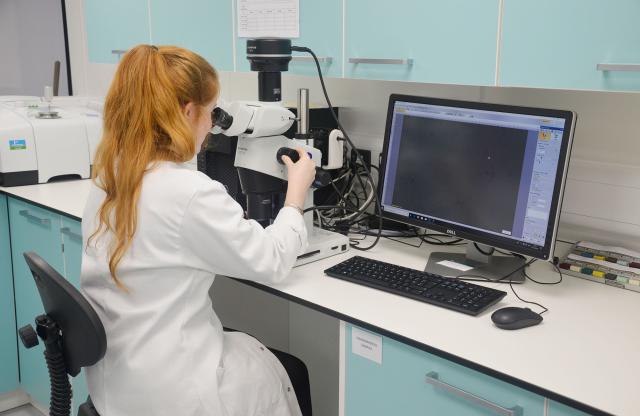
PhD studentships
Plymouth Marine Laboratory conducts multidisciplinary research at the cutting edge of marine science to understand the complex marine environment and help solve the challenges it faces.Plymouth Marine Laboratory
Metabolites from intact phage-infected Synechococcus chemotactically attract heterotrophic marine bacteria
nature.com/articles/s41564-024…
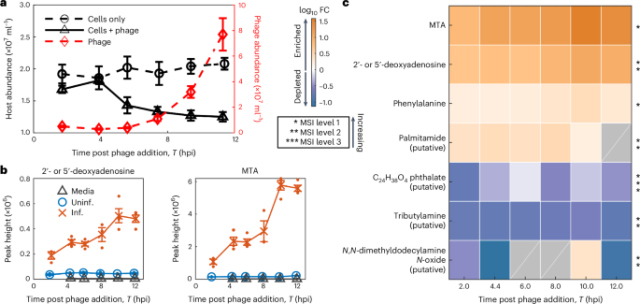
Metabolites from intact phage-infected Synechococcus chemotactically attract heterotrophic marine bacteria - Nature Microbiology
The authors use time-resolved metabolomics and microfluidics to characterize enhanced heterotroph chemoattraction to metabolites released from cyanobacteria during early stages of phage infection.Nature
So sorry to hear that the quite wonderful Hakai Magazine will shut down at the end of the year.
A great privilege to read and even contribute to this excellent publication about science and societies on coasts around the world.
@hakaimagazine @HakaiInstitute #ocean #harbor #marine #coast
Hakai Magazine
Hakai Magazine explores science, society, and the environment in compelling narratives that highlight coastal life and phenomena.Hakai Magazine
Exciting research from one of my colleagues at #VirginiaTech
A late-Ediacaran crown-group sponge animal
nature.com/articles/s41586-024…

A late-Ediacaran crown-group sponge animal - Nature
Cross-hatch impressions from Ediacaran rocks in China are interpreted as having been left by a crown-group sponge fossil, Helicolocellus cantori gen. et sp. nov., characterized by an organic latticework skeleton.Nature
Globally occurring pelagiphage infections create ribosome-deprived cells
nature.com/articles/s41467-024…
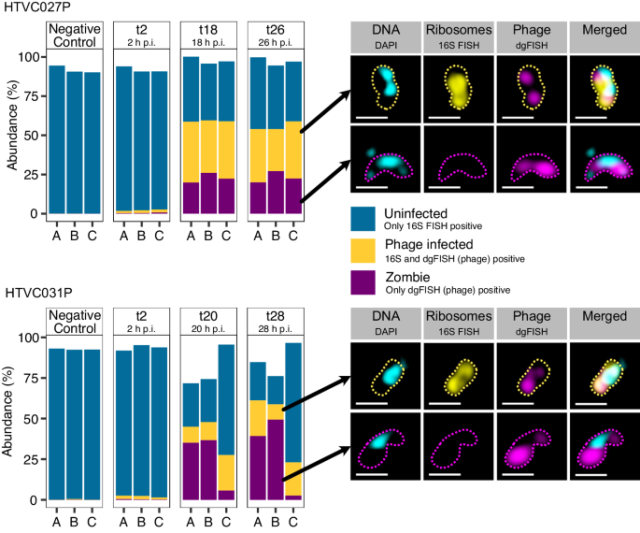
Globally occurring pelagiphage infections create ribosome-deprived cells - Nature Communications
SAR11 bacteria and their phages are abundant in the oceans. Here the authors quantify the number of phage-infected SAR11 cells using microscopy techniques and discover phage-infected cells without any detectable ribosomes.Nature
Who are giant viruses infecting in the ocean?
In a collaborative paper with the Vardi lab, we were able to link many giant virus lineages to protist hosts using #SingleCell #RNASeq. One #protist host (leucocryptos) made up less than 1% of the community, but we could still identify a cryptic viral lineage infecting it, leading to population collapse.
nature.com/articles/s41564-024…
#marine #viruses #microbiology
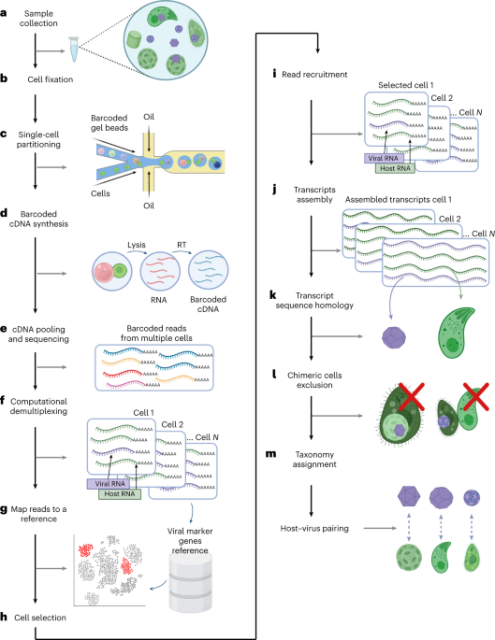
Single-cell RNA-seq of the rare virosphere reveals the native hosts of giant viruses in the marine environment - Nature Microbiology
Active infections of giant viruses in their marine protists hosts are tracked at single-cell resolution, showing that, despite being rare, these viruses still impact microbial population dynamics.Nature
The Simons Foundation has amazing #postdoc #fellowships for anyone interested in #marine microbial #ecology or #evolution.
I'd love to sponsor anyone interested in viral diversity!
Please spread the word!
simonsfoundation.org/grant/sim…
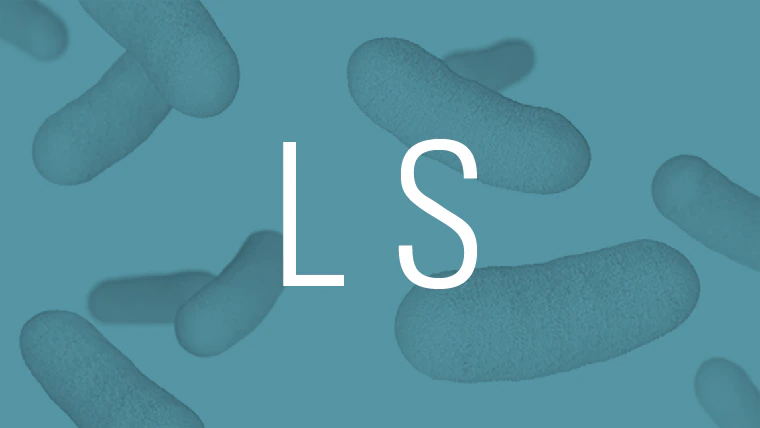
Simons Postdoctoral Fellowships in Marine Microbial Ecology | Simons Foundation
The Simons Foundation invites applications for postdoctoral fellowships to support candidates who intend to pursue a career in basic research on fundamental problems in marine microbial ecology, with an emphasis on understanding the role of microorga…Simons Foundation
Daily turnover of active giant virus infection during algal blooms revealed by single-cell transcriptomics
"A consistent percent of infected coccolithophores displayed the early phase of viral replication for several consecutive days, indicating a daily turnover and continuous virocell-associated metabolite production, potentially affecting the surrounding microbiome"
Happy to share our latest paper, in which we examined the timing at which different microbial groups colonized the ocean!
The first author (Carolina Martinez) is starting her lab at UC Santa Barbara in 2024 and is looking to recruit postdocs and PhD students, so if this looks interesting to you, please reach out to her!
A timeline of bacterial and archaeal diversification in the ocean
elifesciences.org/articles/882…
#microbiology #ocean #marine #evolution

A timeline of bacterial and archaeal diversification in the ocean
Phylogenomics reveals the timeline over which marine bacteria and archaea colonized the oceans and shows the geological context of their diversification.Carolina A Martinez-Gutierrez (eLife Sciences Publications, Ltd)
Contrasting drivers of abundant phage and prokaryotic communities revealed in diverse coastal ecosystems
nature.com/articles/s43705-023…
#marine #viruses #phages #ocean #microbiology #virology

Contrasting drivers of abundant phage and prokaryotic communities revealed in diverse coastal ecosystems - ISME Communications
ISME Communications - Contrasting drivers of abundant phage and prokaryotic communities revealed in diverse coastal ecosystemsNature
Kratosvirus quantuckense: the history and novelty of an algal bloom disrupting virus and a model for giant virus research
doi.org/10.3389/fmicb.2023.128…
#viruses #marine #ocean #HAB #GiantViruses
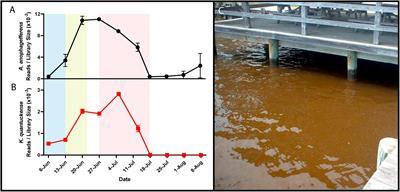
Kratosvirus quantuckense: the history and novelty of an algal bloom disrupting virus and a model for giant virus research
Since the discovery of the first “giant virus,” particular attention has been paid toward isolating and culturing these large DNA viruses through Acanthamoeba spp. bait systems.Frontiers
Nice #oceanography study on particles and #carbon export
Planktonic #microbial signatures of sinking particle export in the open ocean’s interior
nature.com/articles/s41467-023…
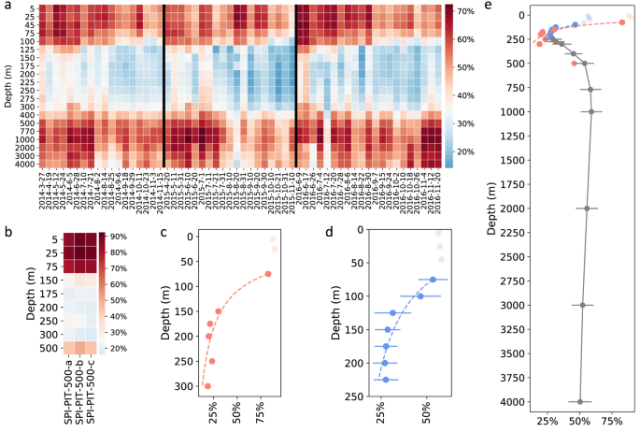
Planktonic microbial signatures of sinking particle export in the open ocean’s interior - Nature Communications
Sinking of organic particles to the deep seafloor is fundamental to ocean carbon cycling. Here, the authors investigate prokaryotic communities in sinking and suspended particles, identifying depth-specific signatures of particle export and carbon cy…Nature
Phylogenetic diversity and functional potential of large and cell-associated #viruses in the Bay of Bengal
Nice work from @scubalaina @giant_virus et al!
Nice study on polar giant viruses!
Genomic adaptation of giant viruses in polar oceans
nature.com/articles/s41467-023…
#viruses #GiantViruses #virology #oceanography #marine #ocean #polar
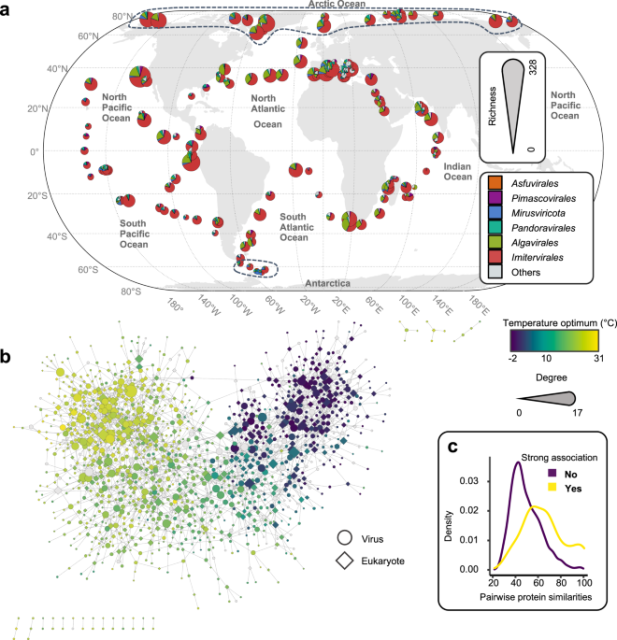
Genomic adaptation of giant viruses in polar oceans - Nature Communications
This study examines the biogeography and functional gene repertoires of marine eukaryote-infecting large and giant DNA viruses.Nature
Top abundant deep ocean heterotrophic bacteria can be retrieved by cultivation
nature.com/articles/s43705-023…
#microbiology #marine #ocean #DeepBiosphere
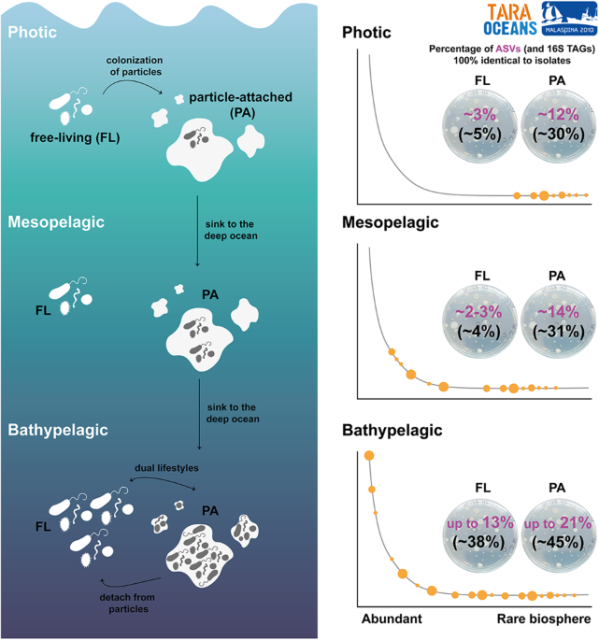
Top abundant deep ocean heterotrophic bacteria can be retrieved by cultivation - ISME Communications
ISME Communications - Top abundant deep ocean heterotrophic bacteria can be retrieved by cultivationNature
Phylogenetic diversity and functional potential of large and cell-associated viruses in the Bay of Bengal
biorxiv.org/content/10.1101/20…
#viruses #ecology #marine #ocean #giantViruses

Phylogenetic diversity and functional potential of large and cell-associated viruses in the Bay of Bengal
The Bay of Bengal (BoB), the largest bay in the world, provides valuable ecosystem services such as fishing and recreation to millions of people living along its coast and has a significant economic value.bioRxiv
Happy to share a collaborative preprint with Assaf Vardi's group in which we use single cell transcriptomics to link giant viruses with their native hosts during a marine algal bloom!
This approach is quite sensitive - we were able to identify viruses infecting one protist group that made up <0.5% of the community.
Homing in on the rare virosphere reveals the native host of giant viruses
biorxiv.org/content/10.1101/20…
#viruses #giantViruses #ocean #marine

Homing in on the rare virosphere reveals the native host of giant viruses
Giant viruses (phylum Nucleocytoviricota) are globally distributed in aquatic ecosystems They play major roles as evolutionary drivers of eukaryotic plankton and regulators of global biogeochemical cycles.bioRxiv
My first "reviewed preprint" on @eLife !
A Timeline of Bacterial and Archaeal Diversification in the Ocean
elifesciences.org/reviewed-pre…
Lots of hard work from former PhD student in my lab Carolina Martinez. Part of a collaboration with @pseudacris
We are enjoying the new process so far and working on revisions to address some of the concerns raised by reviewers.
Chitin utilization by marine picocyanobacteria and the evolution of a planktonic lifestyle
Our latest work on marine giant virus diversity -
Assessing the biogeography of marine giant viruses in four oceanic transects
nature.com/articles/s43705-023…
#viruses #marine #ocean #giantviruses
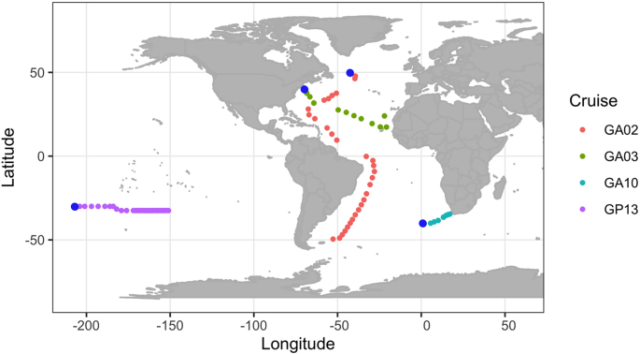
Assessing the biogeography of marine giant viruses in four oceanic transects - ISME Communications
ISME Communications - Assessing the biogeography of marine giant viruses in four oceanic transectsNature
Scientists discover why sea urchins are dying off from US to the Caribbean
Nice quotes from @virome_girl on the recent study!
theguardian.com/environment/20…
And the Sci Adv paper:
doi.org/10.1126/sciadv.adg3200
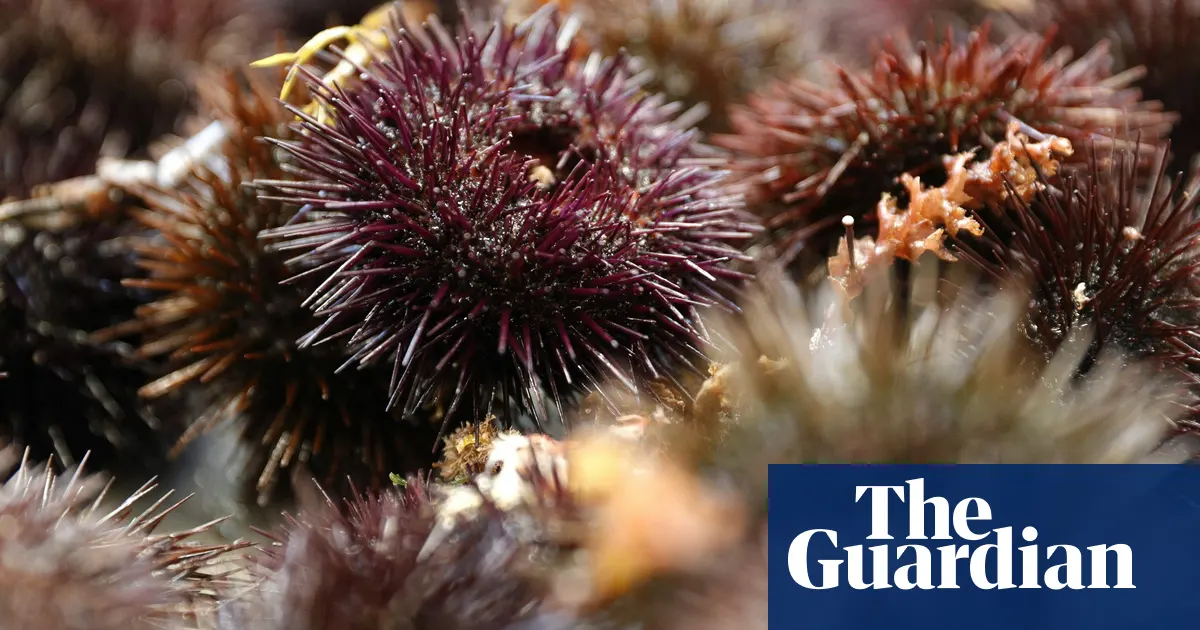
Scientists discover why sea urchins are dying off from US to the Caribbean
A research team has discovered a parasite that’s been killing off sea urchins, but there’s no method to eliminate it yetRichard Luscombe (The Guardian)
Fantastic postdoc opportunity in the field of #marine #microbiology @BarIlanU - check out kranzlerlab.com
Marine Microbial Ecology and Biogeochemistry | Kranzler Lab at BIU | Ramat Gan
Marine microbial ecology and biogeochemistry at the Kranzler Lab at Bar Ilan University.Kranzler Lab at BIU
Giant Virus Infection Signatures Are Modulated by Euphotic Zone Depth Strata and Iron Regimes of the Subantarctic Southern Ocean

Assessing the biogeography of marine giant viruses in four oceanic transects
Viruses of the phylum Nucleocytoviricota are ubiquitous in ocean waters and play important roles in shaping the dynamics of marine ecosystems.bioRxiv
#Virus control
This exciting new research explores the influence of #virus #infection in changing the balance of organic matter degradation between #bacteria and #eukaryotes in #marine #carboncycling during #phytoplankton blooms.
Based on #mesocosm studies, this research demonstrates how #viruses infecting different #microorganisms change community dynamics and the release and potential fate of marine carbon from primary production.
Learn more in this new research in Nature Communications on:
nature.com/articles/s41467-023…
#microbiology #ecology #MicrobialEcology
Viral infection switches the balance between bacterial and eukaryotic recyclers of organic matter during coccolithophore blooms - Nature Communications
Algal blooms are hotspots of marine primary production that play central roles in microbial ecology and global elemental cycling.Nature
#MarineBiology #Virology #sflorg
sflorg.com/2023/01/mb01262301.…

New virus discovered in whales, dolphins across the Pacific
A novel virus, potentially fatal to whales and dolphinswww.sflorg.com
Wonderful essay by @vincentflora and Assaf Vardi on viruses in the ocean
Viral infection in the ocean—A journey across scales
"Aquatic virology tackles some of the most challenging questions in microbial ecology and oceanography, trying to understand how microorganisms that are invisible to the naked eye can influence large-scale processes, such as biogeochemical cycles, or affect entire marine food webs."
journals.plos.org/plosbiology/…
#viruses #virology #ocean #marine
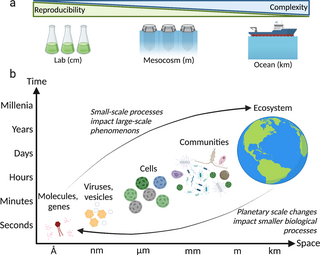
Viral infection in the ocean—A journey across scales
Viruses are the most abundant biological entity in the ocean. This Essay journeys across several orders of magnitude of biological organization, time, and space, to investigate interactions between hosts and viruses in the ocean and their relevance f…journals.plos.org
Fascinating study examining the switch from coexistence to pathogenicity in a marine association
Bacterial lifestyle switch in response to algal metabolites
elifesciences.org/articles/844…
#microbiology #marine #symbiosis

Bacterial lifestyle switch in response to algal metabolites
Opportunistic bacteria modulate their lifestyle from coexistence to pathogenicity by perceiving the physiological state of their algal host through sensing of algal secreted metabolites.Noa Barak-Gavish (eLife Sciences Publications, Ltd)
Wonderful Bio about former postdoc in the lab @giant_virus !
"Monir Moniruzzaman Studies the Secrets of Giant Viruses"
the-scientist.com/scientist-to…
#viruses #microbiology #marine

Monir Moniruzzaman Studies the Secrets of Giant Viruses
The University of Miami researcher studies how a mysterious group of supersized viruses infects and influences the evolution of their hosts.James M. Gaines (The Scientist Magazine)


